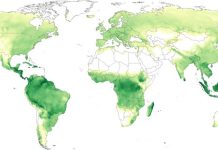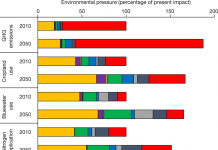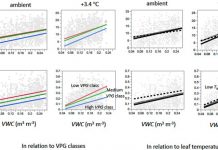【来自陆地生物圈的多种温室气体对未来气候变化的反馈】Benjamin D. Stocker Raphael Roth Fortunat Joos Renato Spahni Marco Steinacher Soenke Zaehle Lex Bouwman Xu-Ri & Iain Colin Prentice. Multiple greenhouse-gas feedbacks from the land biosphere under future climate change scenarios. Nature Climate Change 3 666–672 (2013) doi:10.1038-nclimate1864
Abstract
Atmospheric concentrations of the three important greenhouse gases (GHGs) CO2 CH4 and N2O are mediated by processes in the terrestrial biosphere that are sensitive to climate and CO2. This leads to feedbacks between climate and land and has contributed to the sharp rise in atmospheric GHG concentrations since pre-industrial times. Here we apply a process-based model to reproduce the historical atmospheric N2O and CH4 budgets within their uncertainties and apply future scenarios for climate land-use change and reactive nitrogen (Nr) inputs to investigate future GHG emissions and their feedbacks with climate in a consistent and comprehensive framework1. Results suggest that in a business-as-usual scenario terrestrial N2O and CH4 emissions increase by 80 and 45% respectively and the land becomes a net source of C by AD 2100. N2O and CH4 feedbacks imply an additional warming of 0.4–0.5 °C by AD 2300; on top of 0.8–1.0 °C caused by terrestrial carbon cycle and Albedo feedbacks. The land biosphere represents an increasingly positive feedback to anthropogenic climate change and amplifies equilibrium climate sensitivity by 22–27%. Strong mitigation limits the increase of terrestrial GHG emissions and prevents the land biosphere from acting as an increasingly strong amplifier to anthropogenic climate change.







